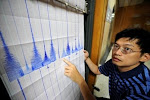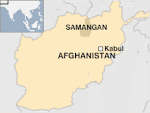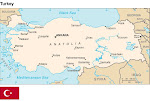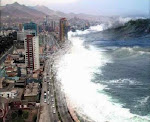 BEICHUAN, China - Shoddy construction and poor planning contributed to the toll from China's devastating earthquake, engineers studying the disaster for the government said Thursday, as a lake still swelling behind a wall of debris threatened communities downstream. Premier Wen Jiabao flew by helicopter to oversee efforts to drain Tangjiashan lake, which was formed when a landslide set off by the May 12 quake blocked a river."Now is a critical moment for the Tangjiashan quake lake, and the most important thing is to ensure there are no casualties," the state-run Xinhua News Agency quoted Wen as saying.More than 10,000 people in low-lying areas about 30 miles downstream were evacuated by Thursday afternoon, adding to a total of more than 250,000 who had been forced to flee to higher ground, Xinhua said.Engineers and building experts sent to the disaster zone to study damage are raising questions about poor construction, bad urban planning and lack of enforcement of building codes. The problems were especially glaring at some schools and in rural areas and small towns, they said.Growing public anger over the deaths of children in collapsed schools has fueled accusations about corruption in school construction, putting the government on the defensive."My feeling is that if the construction work in general had been better, then the loss could have been minimized," said Chen Baosheng of Tongji University, who studies disaster prevention in buildings.Chen and dozens of other experts sent by Beijing for 10 days late last month are compiling a series of recommendations for the government. Though he and two others reached by telephone declined to discuss their conclusions, they described disturbing examples of bad construction."I remember driving past Nanba Primary School," said Li Xianzhong of the China Academy of Building Research in Beijing. "I felt it extremely strange that the school building was shaken to the ground, whereas the buildings next to it were still standing."In Pingwu County, Li said, buildings were constructed near a river bend on unstable beds of sinking soil and shifting sands. In Jiangyou city, a 15-story building was built without support columns driven into the ground for stability, he said.The middle school in Juyuan — a national focal point of public anger after nearly 300 students died — was poorly sited and poorly built, Chen said.Builders used prefabricated concrete slabs for the school, and the main classroom building lay parallel to the fault line, causing it to shake violently during the quake. That building collapsed while an adjacent building perpendicular to the fault line did not, Chen said.Authorities have promised to investigate the school collapses in Sichuan province, but there has not been any word on the findings. Officials were analyzing samples of the debris but said the work would take time.In front of the rubble that was Beichuan Middle School on Thursday, an empty school desk served as a memorial, piled with offerings of chocolate and stuffed toys. Volunteers at the site said more than 1,000 students died. Inside a small sign-in book, parents have scrawled plaintive wishes: "Help us find some answers."Many in China simply want to know why so many schools — some 7,000 classrooms altogether — collapsed so easily and who is to blame."This was absolutely a construction problem. There have been no answers. We're just waiting for information," said Li Shandin, whose 16-year-old daughter died at the Beichuan school. "If we get no information, we have to gather together to sue."Parents have held angry public memorials at other collapsed schools, but the Beichuan site remained peaceful."Because this place was hit so hard, many parents are gone, too," said Chen Datang, a volunteer who was helping parents retrieve their children's belongings from the rubble.Li, an expert at the China Academy of Building Research who specializes in earthquake prevention, said he drafted 1995 guidelines for urban planning that Chengdu, Sichuan's provincial capital, followed well. As a result, he said, the city survived the quake relatively well — some 1,000 dead out of 10 million people — while poorer areas with less to invest suffered.Qi Ji, vice minister of housing and urban-rural development, denied a disproportionate number of classrooms had collapsed, saying that "other public buildings and homes also collapsed." But he acknowledged that tougher building standards should be used during reconstruction. Seismologists have said for years that the area, where the Sichuan plain meets the foothills of the Tibetan highlands, was due for a major quake. Pressure had been rising along the fault since a catastrophic quake in 1933.At a late April meeting of the China Geophysics Association, geologists had discussed the likelihood of a magnitude 6 or 7 earthquake in the region in the coming years, Li Shihui, a geophysicist with the China Academy of Sciences, wrote on his blog last month.Qi acknowledged that "earthquake-resistance standards were not high" in the stricken area, even though it is well known that seismic activity was possible. Still, he said, simply knowing there was a possibility of a quake did not mean authorities could take action."We can only take such information as reference," he said.
BEICHUAN, China - Shoddy construction and poor planning contributed to the toll from China's devastating earthquake, engineers studying the disaster for the government said Thursday, as a lake still swelling behind a wall of debris threatened communities downstream. Premier Wen Jiabao flew by helicopter to oversee efforts to drain Tangjiashan lake, which was formed when a landslide set off by the May 12 quake blocked a river."Now is a critical moment for the Tangjiashan quake lake, and the most important thing is to ensure there are no casualties," the state-run Xinhua News Agency quoted Wen as saying.More than 10,000 people in low-lying areas about 30 miles downstream were evacuated by Thursday afternoon, adding to a total of more than 250,000 who had been forced to flee to higher ground, Xinhua said.Engineers and building experts sent to the disaster zone to study damage are raising questions about poor construction, bad urban planning and lack of enforcement of building codes. The problems were especially glaring at some schools and in rural areas and small towns, they said.Growing public anger over the deaths of children in collapsed schools has fueled accusations about corruption in school construction, putting the government on the defensive."My feeling is that if the construction work in general had been better, then the loss could have been minimized," said Chen Baosheng of Tongji University, who studies disaster prevention in buildings.Chen and dozens of other experts sent by Beijing for 10 days late last month are compiling a series of recommendations for the government. Though he and two others reached by telephone declined to discuss their conclusions, they described disturbing examples of bad construction."I remember driving past Nanba Primary School," said Li Xianzhong of the China Academy of Building Research in Beijing. "I felt it extremely strange that the school building was shaken to the ground, whereas the buildings next to it were still standing."In Pingwu County, Li said, buildings were constructed near a river bend on unstable beds of sinking soil and shifting sands. In Jiangyou city, a 15-story building was built without support columns driven into the ground for stability, he said.The middle school in Juyuan — a national focal point of public anger after nearly 300 students died — was poorly sited and poorly built, Chen said.Builders used prefabricated concrete slabs for the school, and the main classroom building lay parallel to the fault line, causing it to shake violently during the quake. That building collapsed while an adjacent building perpendicular to the fault line did not, Chen said.Authorities have promised to investigate the school collapses in Sichuan province, but there has not been any word on the findings. Officials were analyzing samples of the debris but said the work would take time.In front of the rubble that was Beichuan Middle School on Thursday, an empty school desk served as a memorial, piled with offerings of chocolate and stuffed toys. Volunteers at the site said more than 1,000 students died. Inside a small sign-in book, parents have scrawled plaintive wishes: "Help us find some answers."Many in China simply want to know why so many schools — some 7,000 classrooms altogether — collapsed so easily and who is to blame."This was absolutely a construction problem. There have been no answers. We're just waiting for information," said Li Shandin, whose 16-year-old daughter died at the Beichuan school. "If we get no information, we have to gather together to sue."Parents have held angry public memorials at other collapsed schools, but the Beichuan site remained peaceful."Because this place was hit so hard, many parents are gone, too," said Chen Datang, a volunteer who was helping parents retrieve their children's belongings from the rubble.Li, an expert at the China Academy of Building Research who specializes in earthquake prevention, said he drafted 1995 guidelines for urban planning that Chengdu, Sichuan's provincial capital, followed well. As a result, he said, the city survived the quake relatively well — some 1,000 dead out of 10 million people — while poorer areas with less to invest suffered.Qi Ji, vice minister of housing and urban-rural development, denied a disproportionate number of classrooms had collapsed, saying that "other public buildings and homes also collapsed." But he acknowledged that tougher building standards should be used during reconstruction. Seismologists have said for years that the area, where the Sichuan plain meets the foothills of the Tibetan highlands, was due for a major quake. Pressure had been rising along the fault since a catastrophic quake in 1933.At a late April meeting of the China Geophysics Association, geologists had discussed the likelihood of a magnitude 6 or 7 earthquake in the region in the coming years, Li Shihui, a geophysicist with the China Academy of Sciences, wrote on his blog last month.Qi acknowledged that "earthquake-resistance standards were not high" in the stricken area, even though it is well known that seismic activity was possible. Still, he said, simply knowing there was a possibility of a quake did not mean authorities could take action."We can only take such information as reference," he said.As in the days of Noah...



















.jpg)


.bmp)
No comments:
Post a Comment